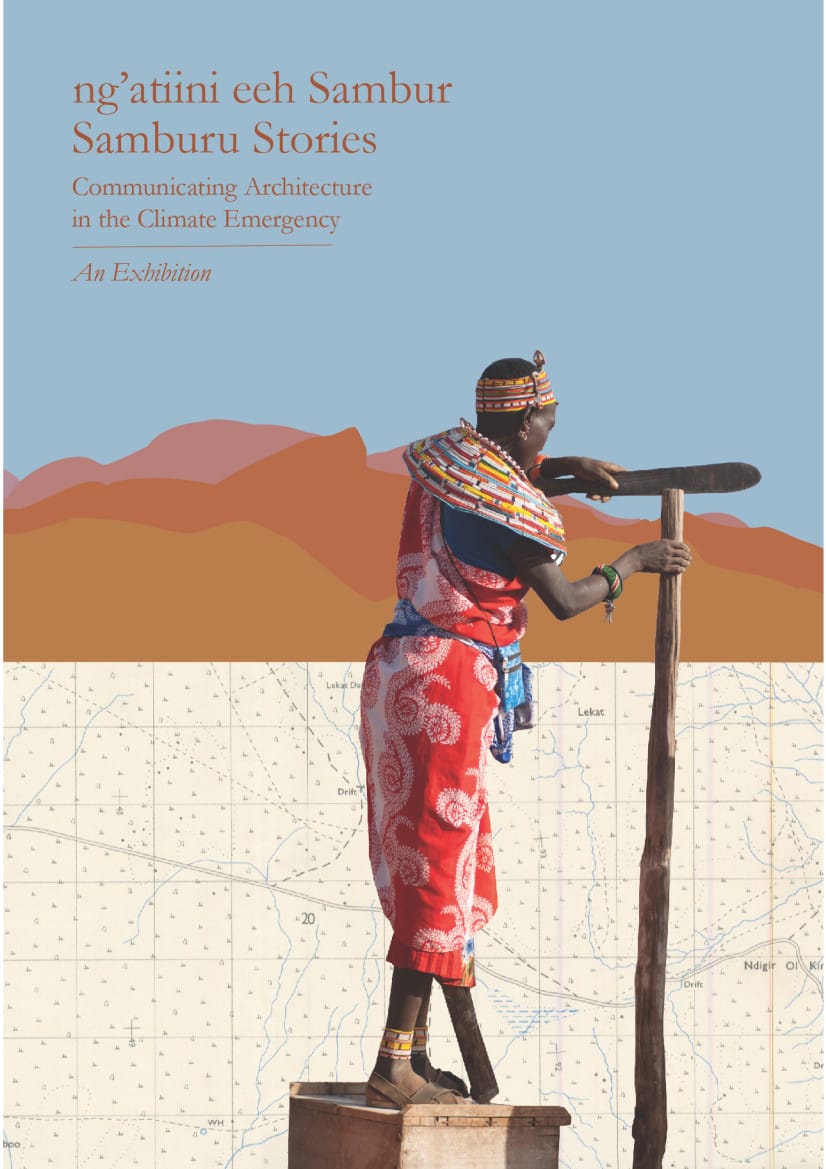In May 2019 Ireland became the second country in the world to declare a climate and biodiversity emergency. The climate emergency is one of the most intractable problems facing humanity and our planet today. It is transboundary in scope, encompassing ecological conservation, migration, water scarcity and gender equality. Climate change is often taught in siloed, abstract ways but solutions to it will not be the exclusive domain of any one field. Understanding climate change has as much to with culture and politics as with science and technology.
Samburu Stories: Exhibiting Architecture in the Climate Emergency is curated by students from University College Dublin. It recounts the story of the collaborative experience of building the n’kaji, the vernacular house of the Samburu lowlands of Kenya. This form of architecture is an excellent conduit for understanding facets of the climate emergency that are often deemed theoretical. Through studying the house from a holistic, transdisciplinary perspective, we can better understand the complexities of global warming and consider how climate change will impact the ways we build and live over the coming decades.
This exhibition is divided into four main sections: House Building, Migration, Gender, and Climate Change. Through photography, drawings, maps and film, we aim to engage in a wider public dialogue about the intersectionality of the climate emergency. At the same time, we are also reappraising some of the conventional Western and Euro-centric approaches to studying architecture. Specifically, this exhibition provides an opportunity to appreciate the sustainability of traditional craft building practices. Much like the rural Irish cottage, the Samburu house has a negligible environmental impact.
The genesis of this exhibition was an active-learning initiative organised in 2019 by the School of Architecture, Planning and Environmental Policy at UCD. ‘Crossroads of Change in the Global South’ was an experimental outdoor learning laboratory in the Samburu lowlands, a conservation area 400km north of Nairobi. This summer field trip was followed by two trimesters of analysis. Seven disciplines and fields were represented: architecture (design, landscape, and history & theory); engineering (civil); archaeology, world heritage conservation, and biology (ecology). In the field, local Samburu women taught us how to build a nomadic-pastoralist house from the ground up. This house is a modern day version of an ancient process.
This exhibition builds upon the pilot project in Kenya in 2019. It showcases the results of new research and practice completed by students in the Masters of Architecture programme at UCD throughout the 2019-2020 academic year.
Whilst physically small in footprint, this initiative addresses some of the big questions about sustainability and pressing global challenges. At the end of your visit, we encourage you to share any insights or questions you may have. Much like the students and staff asked themselves out in the lowlands of Samburu, we ask you:
What has this rural homestead in Kenya taught you about climate change?
Curators:
Emily Ann Byrne
Noah Brabazon
Ciara Fahy
Andre Goyvaerts
Niall Murphy
Kate Newe
Aakriti Sood
Peter Whelan
Academic lead: Dr Samantha L Martin-McAuliffe

